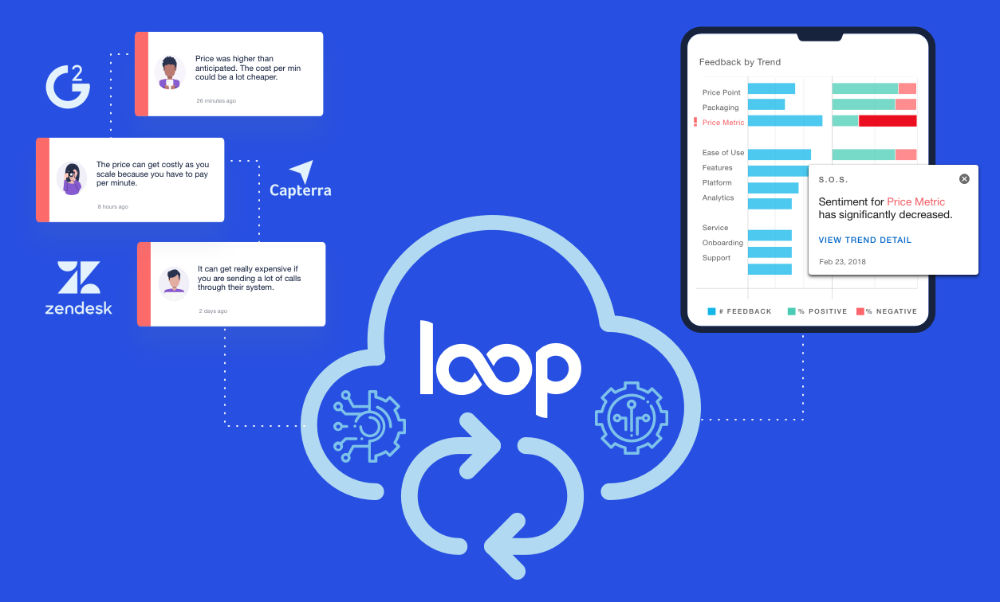Home » How B2B SaaS marketers can position their technology as a “must-have” when customers are cutting non-essentials
How B2B SaaS marketers can position their technology as a “must-have” when customers are cutting non-essentials

Rachel Foster
CEO & B2B copywriter, Fresh Perspective Copywriting

The COVID-19 pandemic is hitting the SaaS industry hard.
While tech companies that sell remote work solutions are seeing increased demand, others are struggling to make sales.
Earlier this month, SaaS companies trading on the S&P 500 were down 40% or more from their 52-week high. Meanwhile, key marketing metrics, such as organic traffic and conversion rates, took a hit across most industries.
What B2B SaaS buyers are saying …
SaaS buyers, especially small businesses, face much uncertainty with their revenue and are cutting anything that isn’t essential. This means that they are trimming their tech stacks back to the basics.
Meanwhile, people are working from home, distracted, and stressed. They don’t have the space to evaluate new technology.
Here are some of the concerns that SaaS customers have expressed:
- Small businesses that thought they could weather the storm are now tightening their spend and canceling any SaaS tools that aren’t mission-critical
- Tech buyers are putting new vendor relationships on hold—even for products that they feel are perfect for their needs
- SaaS buyers are less focused on building pipeline and more focused on protecting customers from churning
5 ways to make your SaaS solution invaluable
With customers under so much pressure, how can you reach out in an empathetic way to further conversations and prevent stalled deals?
Here are five ways to pivot your B2B SaaS marketing and better align with what your customers need today:
1. Become essential.
B2B buyers are cutting tech tools that aren’t essential.
To prevent stalled deals, you may need to rethink your positioning so that you can move from a “nice to have” to a “must-have.”
Review your value proposition and the key messages that you’ve included in your recent marketing materials. The features and benefits that your customers cared about a few months ago may no longer seem essential to their businesses.
How can you talk about your product or service differently to speak to what your customers need today? For example:
- Does your software enable people to work remotely?
- Do you offer any business continuity benefits?
- How will your solution prevent churn and stabilize your customers’ revenue?
- Can you help customers expand into new areas if their current business model is at risk?
- What immediate benefits will customers achieve when they use your product?
Ultimately, you want to show customers that you understand what they are going through and can help them through these challenging times.
2. Meet your customers where they are now.
Your customers’ needs have likely shifted during the past month. But, how can you learn more about their challenges so that you can help them now?
Although many businesses face similar issues, such as supporting remote workers and protecting their revenue, you don’t want to assume that you know what customers are going through.
It’s critical to listen to your customers.
Here are three ways you can leverage voice of customer data to anticipate customer needs in unprecedented times:
- Trade impersonal surveys for one-to-one authentic outreach, such as video chats.
- Use simple technology to monitor what customers are saying across all of your channels, including online reviews, support tickets, and CRM notes.
- Trade costly, time-consuming research for tools that automatically collect customer feedback and tags it by topic or issue.
After you review the voice of customer data, you may need to shift your marketing strategy if you find that customers’ top concerns aren’t what you expected.
3. Tweak your existing content. Don’t throw it away.
You may wonder if your recent content—such as new ebooks or blog posts—is still relevant.
If your SaaS offering hasn’t changed, you can likely continue to use these assets.
However, you may want to update their social posts and email sequences to address your customers’ current concerns and describe how your content will help them now. Doing this allows you to drive more value from your existing content while you make your message timelier.
You should also check your content for anything that might be insensitive, such as images of crowds having fun or autoresponders that mention things people can’t do at the moment.
Also, consider taking your premium content out from behind gates. Removing barriers makes it easier for customers to engage with you and learn how you can help them.
4. Discuss your customers’ top concerns, even if they don’t relate directly to your SaaS offering.
Don’t limit your conversations to topics that align with your product. You can likely help your customers in other vital areas.
A few years ago, a SaaS invoicing company published an ebook on how freelancers can get more clients. Although the company doesn’t help freelancers get clients, it tapped into its audience’s #1 concern.
The ebook went viral. On the day it was published, three people emailed it to me. I also saw numerous references to it on social media.
The ebook must have been a big hit for the company’s marketing team, as they still talk about similar subjects today.
5. Update your digital channels.
If business is slow, consider using any extra time to update your website, product descriptions, social profiles, and other marketing materials. You can also create fresh content and work on your SEO.
Our current situation won’t last forever. Updating your messaging now can give you an edge over competition that may lag.
What’s next?
B2B marketing has always been long-term games—now more than ever.
Even if you don’t generate immediate sales, providing valuable content now will help you connect with customers who will keep you top-of-mind for the future.
Want to know what customers think so that you can keep them engaged and minimize churn? Get your FREE Voice of Customer Reporting Template.




